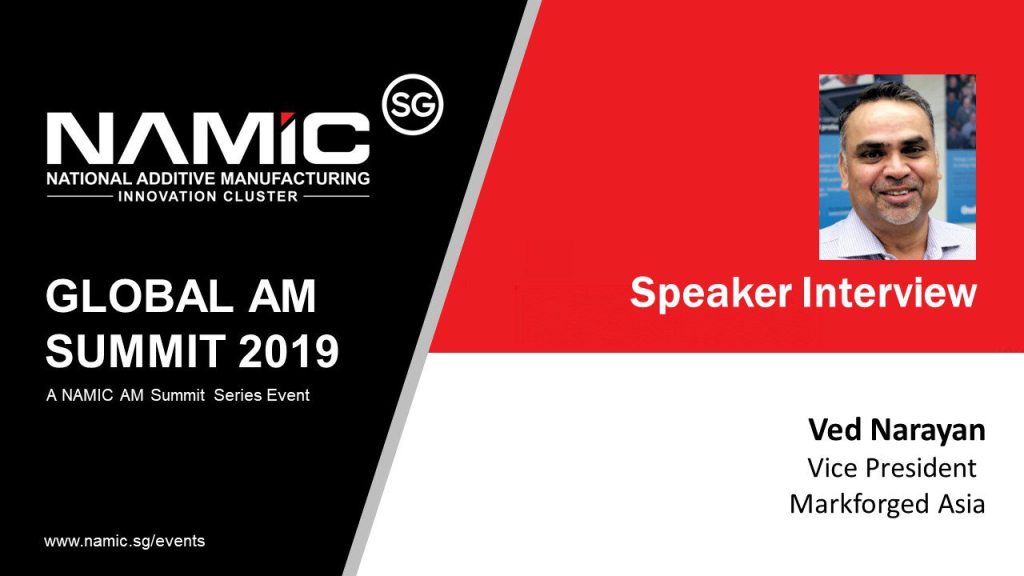- What does the Future of Manufacturing mean to you and your company?
To us, the future of manufacturing means developing new products, materials, and software so that our customers can produce parts more efficiently and at a lower cost. The future of manufacturing lies in smart factories and software-based innovations. ?It’s about being able to efficiently and effectively manufacture any shape with any material on demand. This will help bring down production costs, move offshore manufacturing to local, transform global logistics to local, accelerate the product development process, and enable predictable demand planning.
- Sustainability is the latest buzz word. How is your organization embracing it?
Additive manufacturing is naturally more sustainable than traditional manufacturing for a couple of reasons. First, with traditional subtractive methods of manufacturing, there is often waste that results from carving away material to create your desired part. With additive manufacturing, the material is put down layer by layer to build the part, which reduces if not eliminates the waste of excess material. Second, with additive manufacturing parts can be printed on-demand, which reduces the need to store large quantities of backup parts for tooling and fixtures. With the need for fewer or smaller storage facilities, companies will be able to reduce their carbon footprint.
Markforged is looking to take this natural advantage one step further with our new AI software, Blacksmith. Blacksmith is designed to reduce material and part waste even further by increasing the accuracy and efficiency of the additive manufacturing process. This will reduce the number of parts that are thrown away due to inaccuracies and overall reduce the amount of waste produced during the production of a part.
- Industry 4.0 – where is this Revolution leading towards?
The next industrial revolution is leading towards smart factories that are designed to accelerate the production and manufacturing process. This will be led by innovations in software that will help us redefine traditional manufacturing.
Markforged started out with cloud-connected 3D printers that allowed users to print parts and monitor the process from anywhere. Now with our new AI software, Blacksmith, we are improving the reliability of these prints. With a focus on the metal additive manufacturing process, Blacksmith will give machines the ability to learn and adapt so that the part is printed correctly every time.
- What are the key factors to consider in adopting technologies to achieve a Digital Manufacturing Environment?
There are three key factors that companies should consider when adopting technologies. The first is figuring out how you will use it. Applications will drive a company’s technology requirements and ROI, and so solidifying your desired applications will help provide additional details to your decision-making process.
The second key factor is financial. When adopting new technologies ROI is always a factor for making the transition to a digital manufacturing environment. Businesses should consider the broader impact of the technology on issues like cost savings, operational efficiencies, and the competitive advantage that it brings.
Finally, companies should be considering the training involved and people required in order to fully adopt the technology.? It is not just about taking existing designs into the Digital Manufacturing environment but it is important to be flexible to design changes to take full advantage of the new environment?. Companies will need to consider ease of use and how they will enable their team to make full use of the newly adopted technology.
- Please share your take on the process and trends of AM Material and importance materials development for AM adoption.
To gain early adoption for a new manufacturing process, often one for one material replacement is considered. Comparisons are made with parts made of materials that are known in traditional manufacturing methods. However, as the technology matures, materials and their properties tend to be considered in conjunction with the manufacturing process. Just as there are metal alloys designed for the casting process, the process of additive manufacturing will drive new materials development that are better suited for the technology.
- What can be done to further expand the potential of 3D Printing?
We believe that artificial intelligence and cloud-connectivity are the future of 3D printing. Traditionally, manufacturing machines have no self-awareness as to what they’re creating. Simply put, unless a person intervenes, machines can continuously produce out-of-spec parts.
Blacksmith takes the inspection and manufacturing technology the world already knows and closes the process loop to repeatedly and reliably produce the perfect part the first time, every time. The first of its kind AI solution continues to grow and learn with every part printed across the fleet of machines. This means that Blacksmith learns at the speed of global production and users continuously benefit from its improved knowledge. Markforged brings this powerful AI solution to 3D printing first but its technology will expand to additional manufacturing equipment. Blacksmith is the software that will streamline your entire factory.

